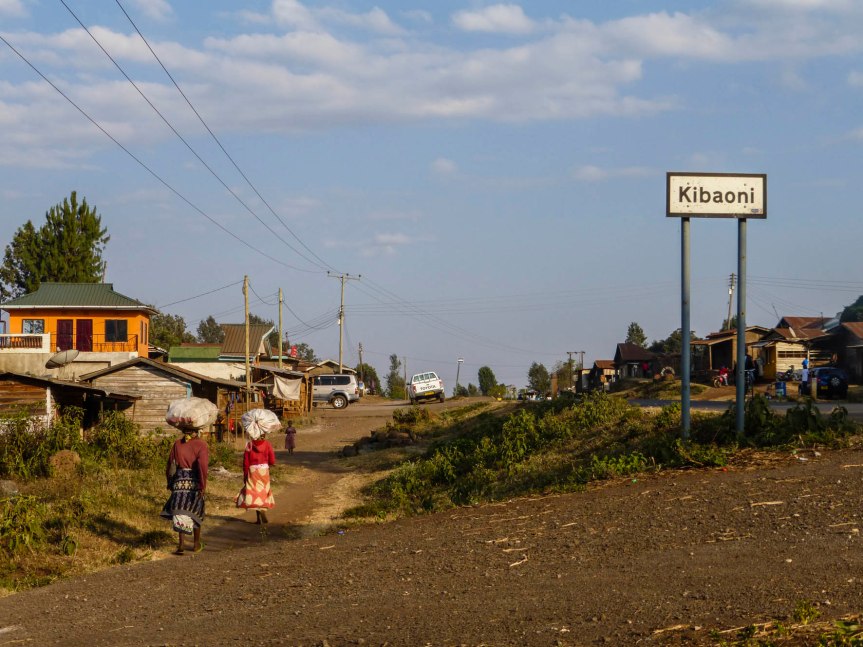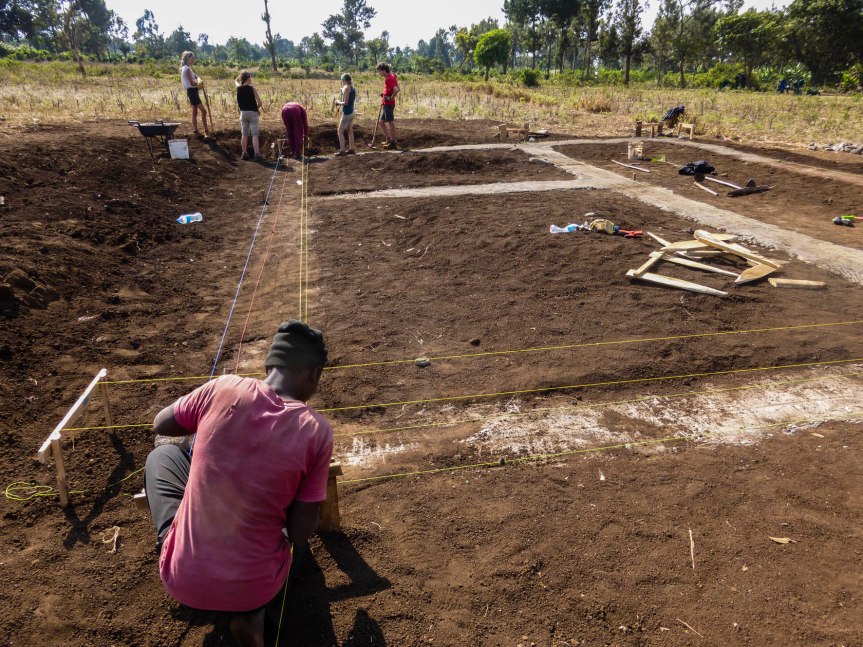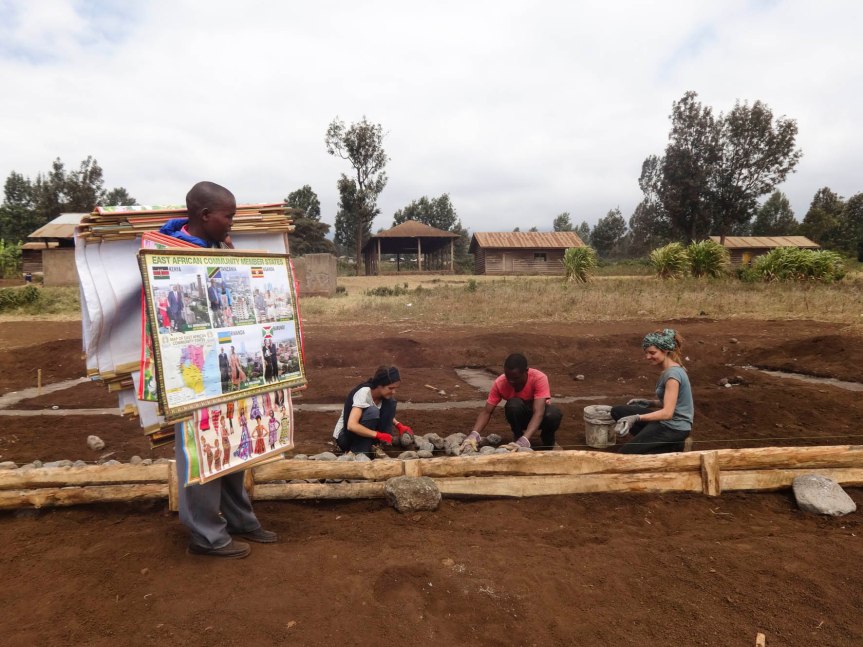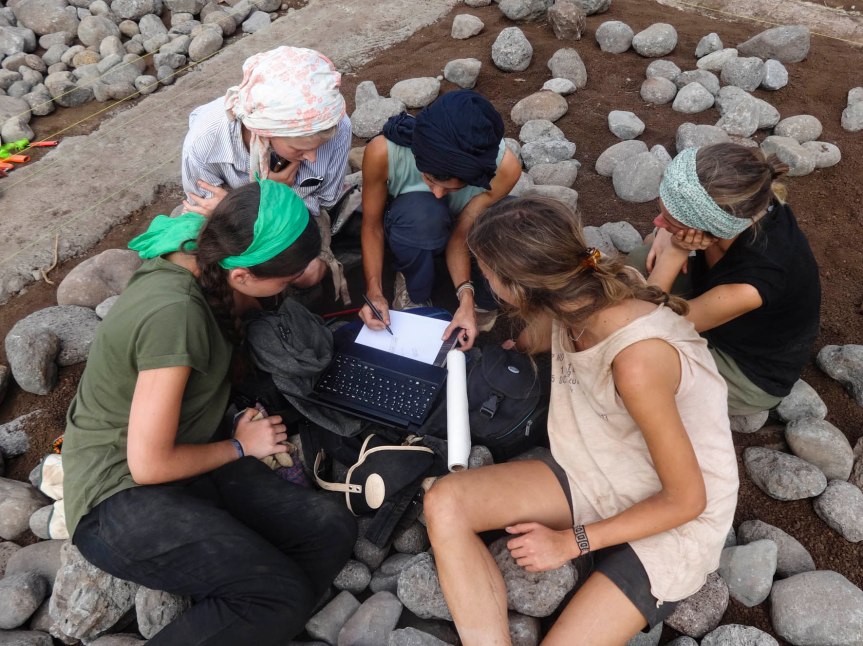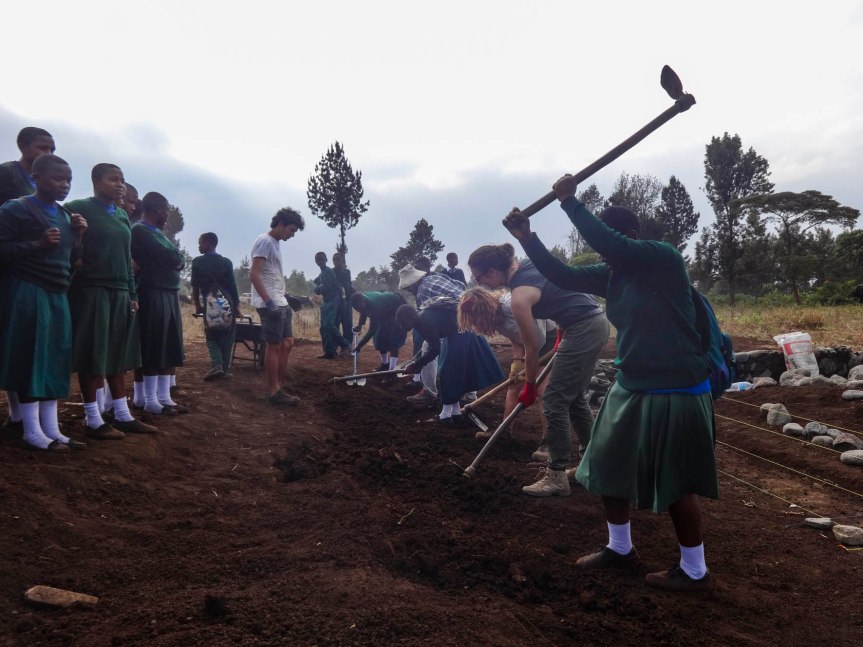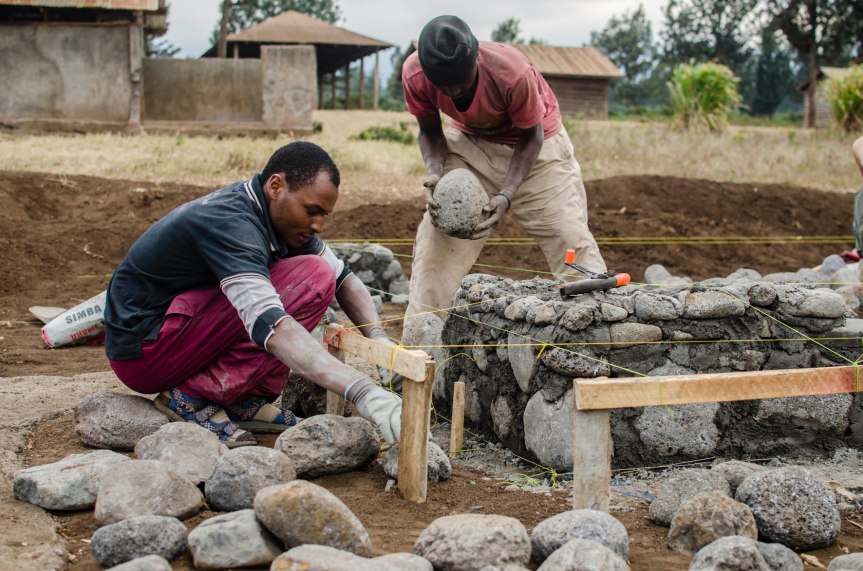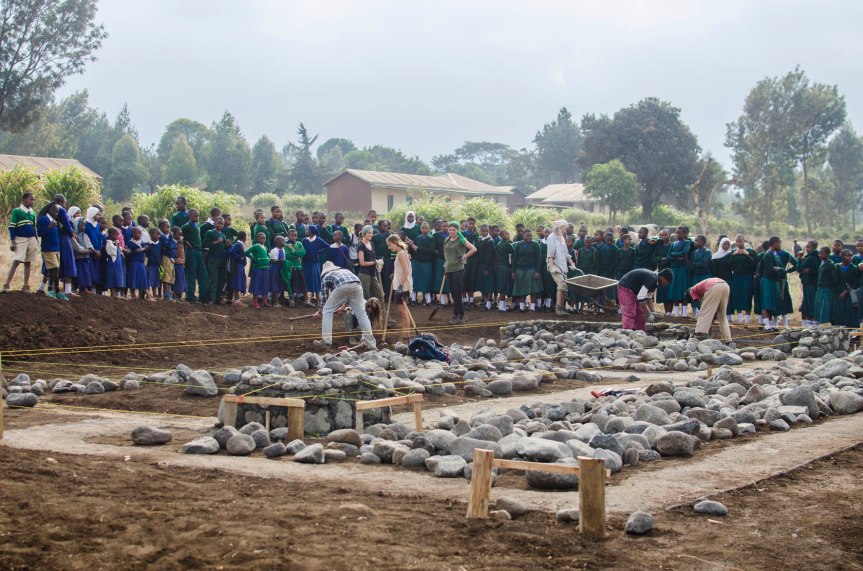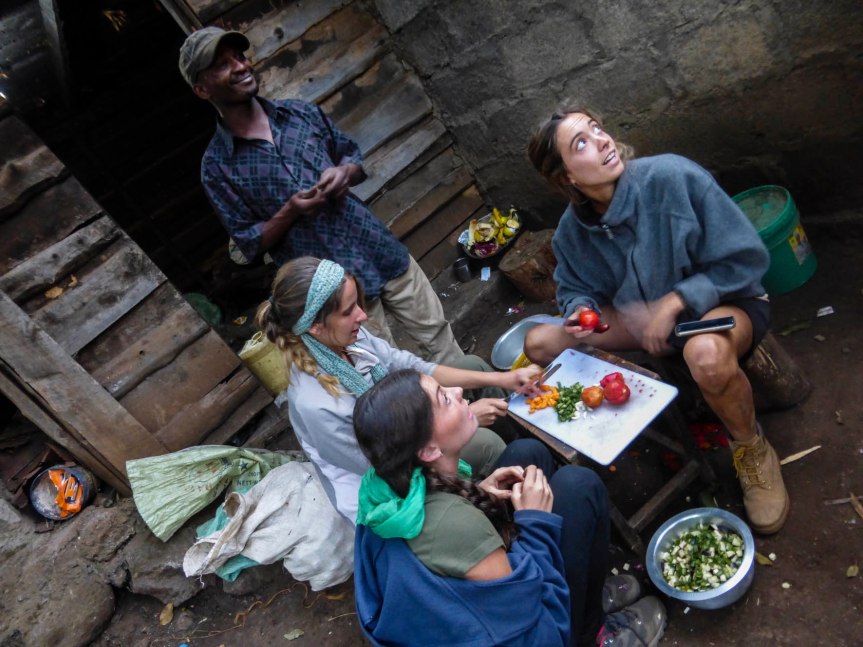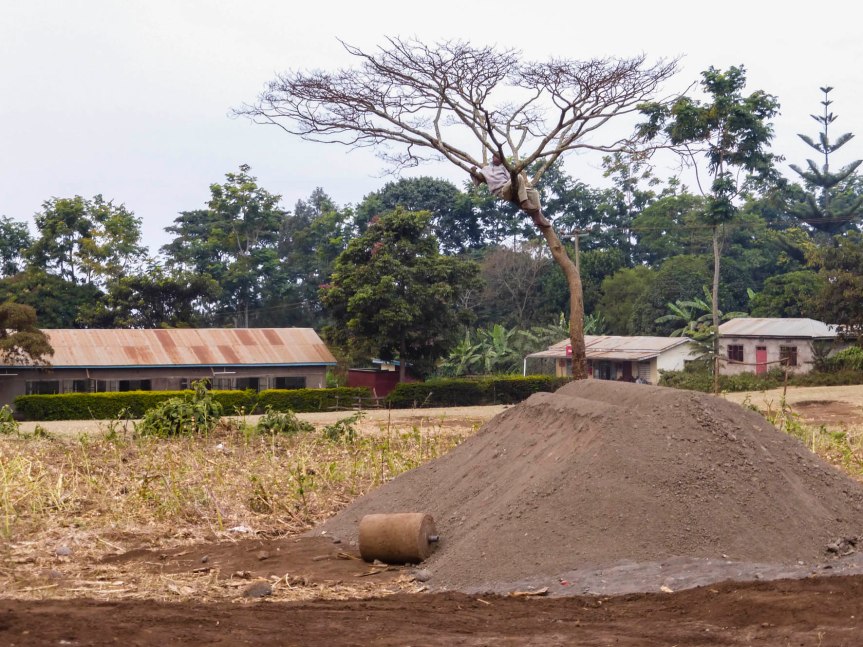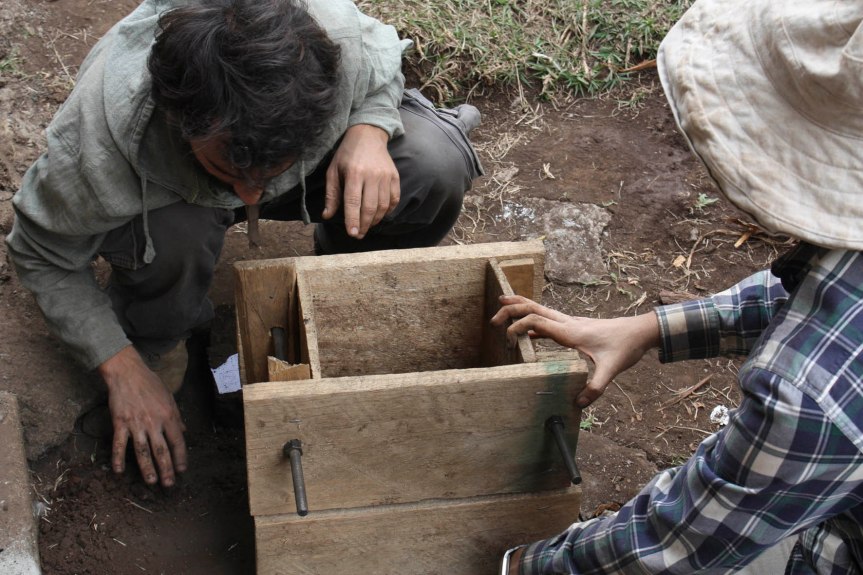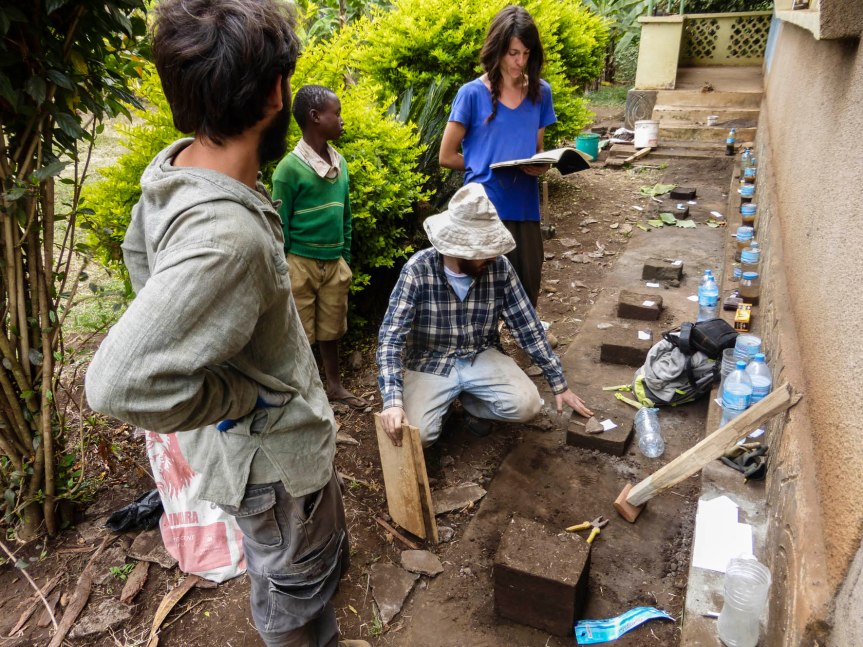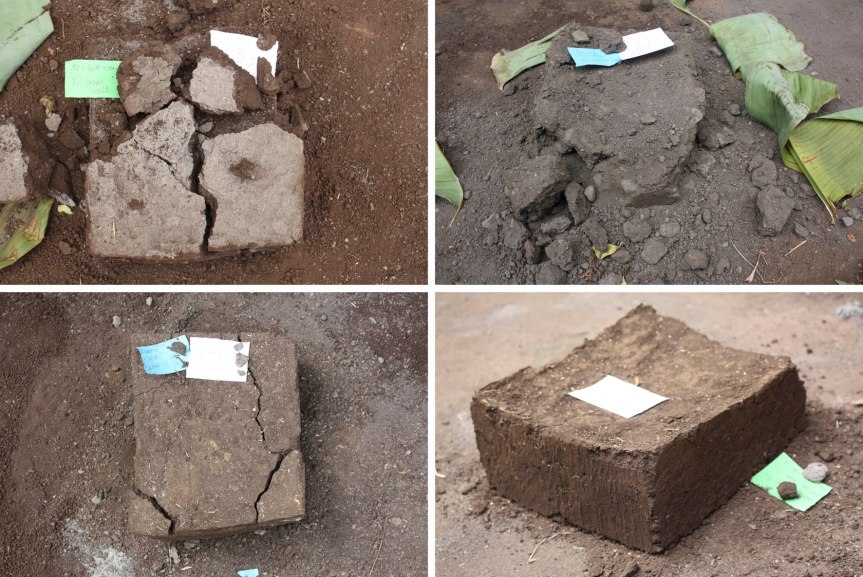On Monday of our fourth week in Kibaoni we continued placing the stones in the foundations and pouring the last layer of concrete.
The next step was to start putting strings to mark the path for the over foundations and we built some wooden sticks to mark the width of 40cm all along the foundations.
On Friday we were invited by Mr. Matoli to a celebration for Saint Ignacio de Loyola. It took place in the house of a neighbour and, as usual, it consisted on a mess and afterwards, a big amount of delicious food was served. After, we enjoyed dancing with all the kids until we were exhausted and came back home.
This week we also began testing the earth to gain knowledge of the soil’s consistency at and around the construction site. Our aim is to find the best mixture of earth, sand and fibers. Therefore we made a small, wooden 20×20 cm large formwork for testing blocks.
Firstly, we started making test block of rammed earth with the earth from the construction site and water. The block started to crack after an hour, though after it dried, its pieces were hard. The contractive nature of clay in this test made us believe that the top layer of the sediment tests was clay. We then performed several experiments with different proportions of earth and sand mixed with water. The mixture of 60% sand and 40% earth seemed the most resistant. We rammed 13cm of airy mixture into 8cm. We made the tampers from wood, cement and concrete.
We then did several tests with cement up to 15%, and additives like pig and cow manures from the neighbor’s farm, and salt, to revitalize the soil since the site was a monoculture of potatoes. We rammed many differenttest blocks from superdry to very wet mixtures: some with cement or fibres.
While digging on the site, we discovered a new type of earth, reddish, rich in iron, that seemed to have clay. We continued the tests with this new soil.
After some days testing for rammed earth, we also started experimenting new techniques in earth construction inspired of local architecture: Cob and Adobe. Tests seem to show that a ratio of 1:1:1, earth: sand: fibres, and relative damp material gets us the best result for these techniques. Also, the rammed earth tests showed that a mixture of 80% sand and 20% earth without additions and a wet texture is the best yet! It is similar to the Shuttered Cob technique in Britain in the 19th century. But let’s see what the next week will bring!
